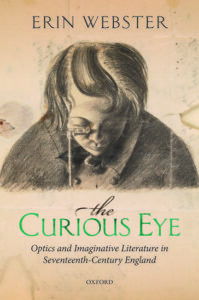 As one whose undergraduate education focused on English literature, with a particular emphasis (much to the irritation of many of my professors) on its history, and my bread-and-cheese occupation for nearly the past three decades now has been as a developer of optical instruments, when I read of Prof. Erin Webster‘s recently published book The Curious Eye; Optics and Imaginative Literature in Seventeenth-Century England I knew that it was a book that I absolutely must read – and at the earliest opportunity.
As one whose undergraduate education focused on English literature, with a particular emphasis (much to the irritation of many of my professors) on its history, and my bread-and-cheese occupation for nearly the past three decades now has been as a developer of optical instruments, when I read of Prof. Erin Webster‘s recently published book The Curious Eye; Optics and Imaginative Literature in Seventeenth-Century England I knew that it was a book that I absolutely must read – and at the earliest opportunity.
Prof. Webster combines an examination of the “imaginative literary works by Francis Bacon, John Milton, Margaret Cavendish, and Aphra Behn together with optical and philosophical treatises by Johannes Kepler, Rene Descartes, Robert Hooke, Robert Boyle, and Isaac Newton” in search of the answer to two central questions of their time: “What are the limits to human vision, and to what extent can these limits be overcome by technological enhancement?” From there, given the multiple interlacing paths of enquiry that can be followed given such materials, the sky – or perhaps taking the microscope, the development of which plays as great a part in this investigation as the telescope, into consideration as well – the microscopic space inside a water drop, is the proverbial limit.
